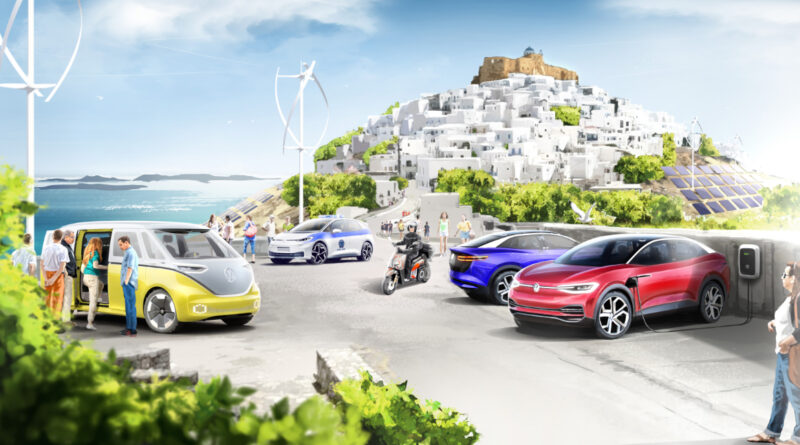Welcome to EV Island: Greece’s Astypalea set for VW-led electric revolution
Volkswagen has today announced it will transform a tiny Greek island into an all-electric nirvana, signing a memorandum of understanding to revolutionise the island’s transport infrastructure with an influx of new EVs.
Astypalea is a 100-square-kilometre island in the Aegean Sea, and VW is targeting it as a small-scale test case to highlight what the world could be like with a mass uptake of EVs, with the Group hoping to deliver climate-neutral mobility to the island.
“Politics, business and society have a common responsibility to limit climate change. Our long-term goal is climate-neutral mobility for everyone. And with the Astypalea project we will explore how to realise that vision already today. E-mobility and smart mobility will improve the quality of life, while contributing to a carbon neutral future,” says VW Group chief, Dr. Herbert Diess.
The plan involves replacing 1500 ICE vehicles with 1000 BEVs, as well as delivering an electric ride-sharing service that will run not just across the tourist-heavy summer months, but year-round.
The program will run for six years, and will include replacing the two-bus public transport system with a fleet of e-scooters and e-bikes, as well as electric police cars, ambulances and fire trucks.
“I strongly believe in partnerships. Governments can’t deliver on their own and the private sector isn’t the answer to every question. That is why this ambitious endeavor is the result of the close partnership between the Greek state and Volkswagen Group,” says Hellenic Republic PM, Kyriakos Mitsotakis.
“A world leader in the automotive industry that aims at making its fleet of vehicles and the company carbon neutral by 2050; coming together with an European nation in full transformation mode.”
The final piece in the puzzle will be power generation, with VW to help transition the island to wind and solar energy, and install 230 private and public charging stations.
What’s in it for the island? Cleaner transport, obviously, but also the opportunity to be put on the map as a sustainable-energy tourist destination. The island, home to just 1300, already attracts some 72,000 tourists every year, with local authorities hopeful they can increase that number.




